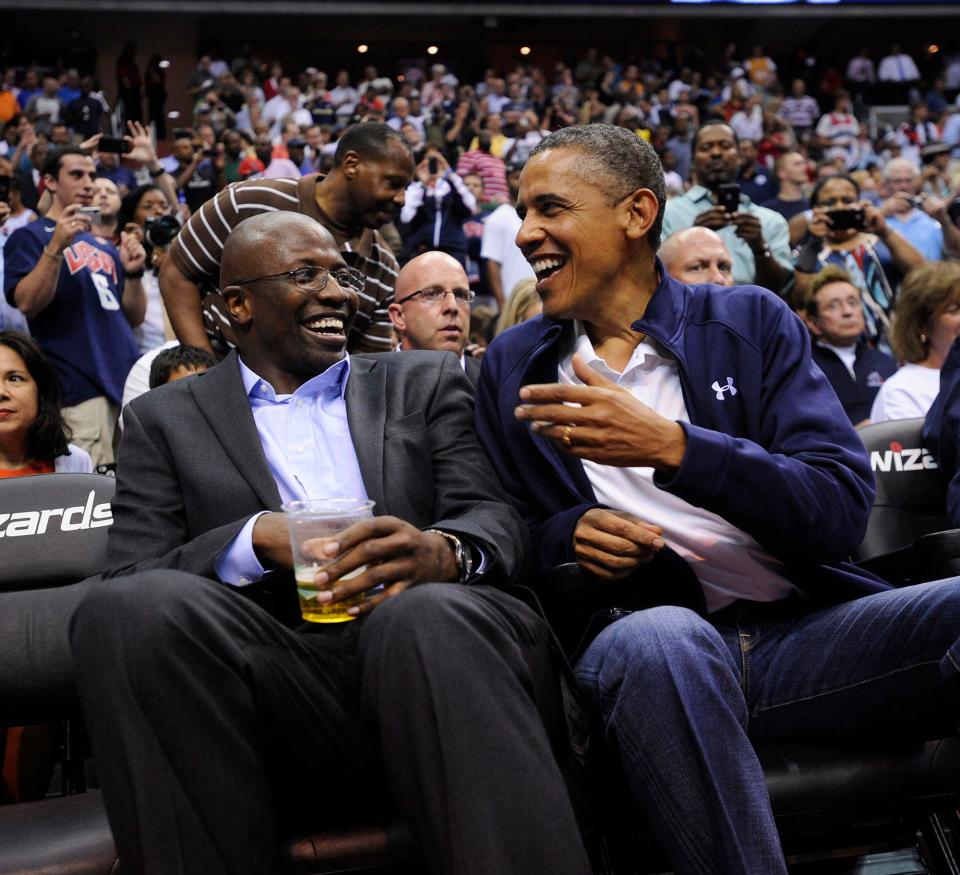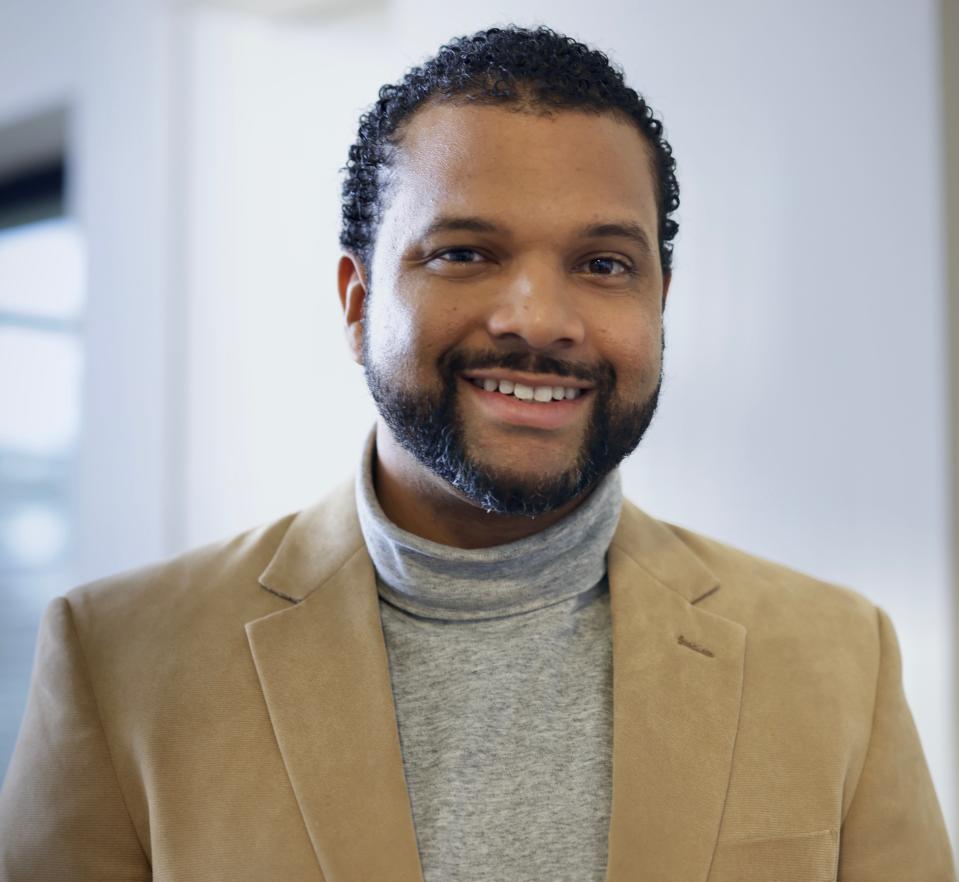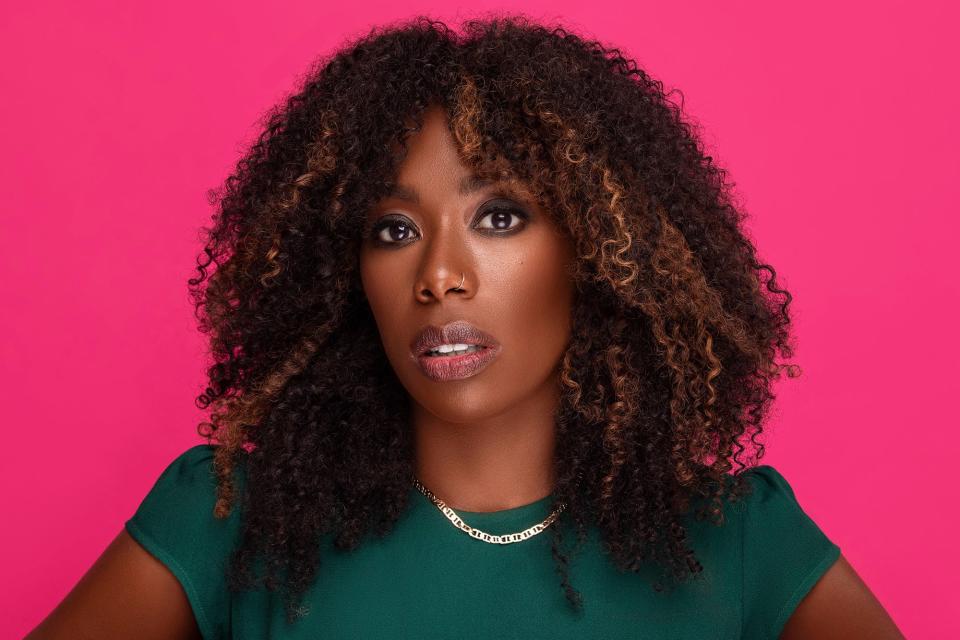What is code-switching? Why Black Americans say they can't be themselves at work
As one of the few Black women in the corporate offices where she worked, Regina Lawless took pains to blend in. She donned conservative blazers and low-wedge heels and tucked her hair in a wig instead of wearing natural hairstyles or braids.
Echoing the speech patterns of her white colleagues, she avoided African American Vernacular English, spoke in a quieter voice and buttoned down her mannerisms. Even in casual moments around the watercooler, she constantly monitored how she carried herself and chatted about the latest episode of “Game of Thrones,” not “Insecure.”
“I was coming in as a young Black woman and I didn’t want them to think of me as unprofessional or ghetto or pick your negative stereotype of Black women,” she said. “It was my way not to have people question my competence or my professionalism.”
For many employees of color, this is as routine or familiar as breathing. Lawless was “code-switching,” meaning she changed her appearance, speech and behavior to fit in and put others at ease.
“Had I not code-switched and conformed, I would not have been seen as having leadership potential,” said Lawless, whose last corporate job was as head of diversity, equity and inclusion at Instagram.
But the mental gymnastics came at a cost.
“I joke with people that I wanted to retire at 40," said Lawless who today runs her own company, Bossy and Blissful, and has a new book coming out, “Do You: A Journey of Success, Loss and Learning to Live a More MeaningFULL Life.” "I felt like an 80-year-old because of all the added cognitive load I had to carry on top of just my day job.”
Black employees more likely than most to code-switch
Black employees are nearly three times more likely to code-switch than white employees, according to a survey of more than 2,000 full- and part-time employees conducted for Indeed by The Harris Poll.
What's more, nearly half of Black employees see code-switching as a necessity at work.
Diversity experts say the habit is becoming more common as the conservative backlash against diversity, equity and inclusion (DEI) causes some companies to cut back on initiatives.
Emboldened by a Supreme Court ruling last summer striking down affirmative action in education, conservative activists have filed a growing number of legal challenges advocating for "colorblindness" in the workplace.
Nearly one-third of respondents who said their company has implemented DEI initiatives have code-switched, according to the Indeed survey. Nearly half of respondents whose company is scaling back on DEI investments have code-switched.
Why Black Americans feel compelled to code-switch at work
Workplaces have become more inclusive since George Floyd’s murder in Minneapolis in 2020 sparked a national reckoning. They have hired more people from diverse backgrounds and had more open discussions about race in the workplace. But cultural norms – how people are expected to speak, act and dress – have evolved more slowly.
Code-switching is a form of self-protection for Black Americans, who regularly face anti-Black bias on the job, said Darin Johnson, a doctoral student at the University of Pennsylvania’s Annenberg School for Communication and a member of the Communication Neuroscience Lab.
“At work, Black folks have dealt with a lot of racism and a lot of bias,” said Johnson, who studies code-switching.
Deep racial inequalities persist at every level in the business world, creating sharply disparate outcomes for Black Americans. But Black women face multiple layers of bias that prevent them from truly being themselves at the office, said Y-Vonne Hutchinson, CEO and founder of the DEI consulting firm ReadySet and author of “How to Talk to Your Boss About Race.”
“You have all of the biases related to being a woman. You also have the biases related to Blackness,” Hutchinson said. “So when I code-switch, I am not just code-switching to fit into a white workplace, I am code-switching to fit into a white workplace as a Black woman.”
What is code-switching? Obama raised awareness in the White House
The term "code-switching" was coined in 1954 by sociolinguist Einar Haugen to describe how people mix languages or dialects. In the 1970s, linguists began using the term to refer to the dynamics between people of color and the majority white culture.
Some high-profile incidents have raised mainstream awareness of code-switching in recent years.
A video of President Barack Obama in the locker room of the U.S. men’s Olympic basketball team in 2012 went viral for how differently he greeted a white assistant coach (a firm handshake) and NBA player Kevin Durant (an embrace and tap on the back). The clip inspired a comedy sketch on Comedy Central’s “Key & Peele” with Obama leaving the podium and formally greeting white men but switching gears with a Black man (“What’s up fam?”).
More recently, a buzzy online video showed a Black employee striding into work and happily greeting colleagues of color (“Oh, hey, Black queen”). When she runs into a white colleague, her mask drops and her tone shifts as she exchanges polite niceties about the weekend.

Everyone code-switches, but for Black Americans, it's a required skill
To some extent, code-switching is a universal trait, meaning we all speak or act one way with friends and family and another with colleagues or bosses, says Myles Durkee, an assistant professor of psychology at the University of Michigan who studies code-switching.
In the Indeed survey, 35% of Hispanic employees, 37% of employees who felt discriminated against at work and 35% of younger employees ages 18 to 34 said they have code-switched.
Code-switching is frequently considered a required skill for Black Americans, whether it’s a motorist adopting a more deferential tone during a traffic stop or a new employee straightening her hair.

On the job, Black employees code-switch to get hired or promoted. And almost 4 out of 10 Black respondents in the Indeed survey said that if they stopped code-switching, it would have a negative impact such as poor performance reviews or fewer opportunities for advancement.
“For African Americans, code-switching is a performative expression that has not only helped some of us thrive in mainstream culture, it has helped many of us simply survive,” Ida Harris wrote in Yes! Magazine.
Some Black professionals see tangible benefits in downplaying their cultural identity, Durkee found as one of the researchers who studied hundreds of Black college-educated professionals who code-switched to show they were a “fit” in their organization when aspiring to leadership and when guarding against discrimination.
But the hypervigilance needed to code-switch can take a sharp toll and is linked to higher rates of stress and burnout, Durkee said.

Calculating the high cost of code-switching at work
When Misty Gaither worked in the banking world, she says, she code-switched to fit in, too. No more. Today, she is vice president of global diversity, equity, inclusion and belonging at Indeed.
“I do all the things that I would never do before,"Gaither said. "I wear my hair in all different types of styles to the point where people are like, ‘Hey we didn’t recognize you.' My signature is a bold red lip. I wear gold hoops. I don’t dress like anyone else. I wear whatever I am most comfortable in.”
But the Harris Poll her company commissioned revealed something that surprised Gaither. Black employees code-switch at a high rate even in organizations with diverse leadership and robust commitments to diversity.
“Representation alone is not enough to curb the need to code-switch,” Gaither said.
How to create a more inclusive work culture
Durkee says organizations should make sure people of color are represented at all levels of an organization so their identities are part of the cultural norms. Organizations should also examine how their culture puts pressure on people from nonmajority groups to assimilate.

What are your organization's unspoken norms of communication? What are you telling employees who don’t conform to those standards? Are you telling someone who speaks African American Vernacular English (AAVE) that they are unprofessional?
Hutchinson recommends taking an inclusive approach to communication that honors different communication styles.
Review your dress code. “Do you have a dress code that penalizes people wearing natural hairstyles or braids? What does it mean to dress professionally? What kind of biases are encoded there?" Hutchinson said.
Co-workers and managers can also bring more of their own identity to work, which will encourage others to do the same, Durkee said.
Learn about cultural differences, he said. Bring Black employees into your network and invite their input.
Check your biases. Don’t ask Black colleagues to explain themselves. If you catch yourself thinking that your Black colleague is different from other Black people, ask yourself why you feel that way.
This article originally appeared on USA TODAY: Why Black Americans feel they can't be themselves at work
